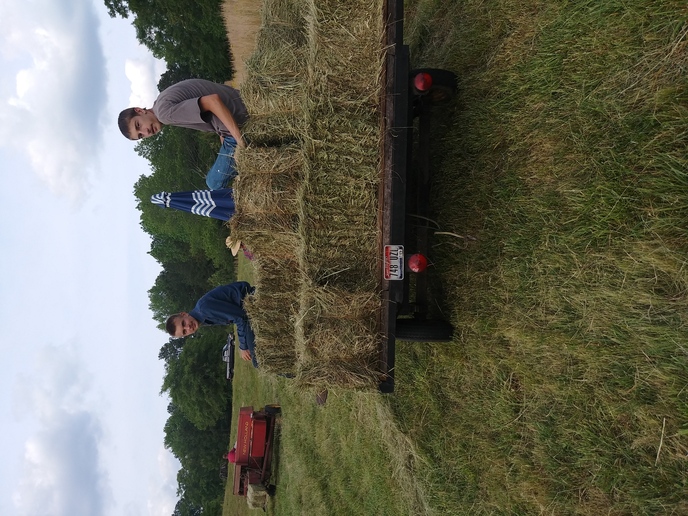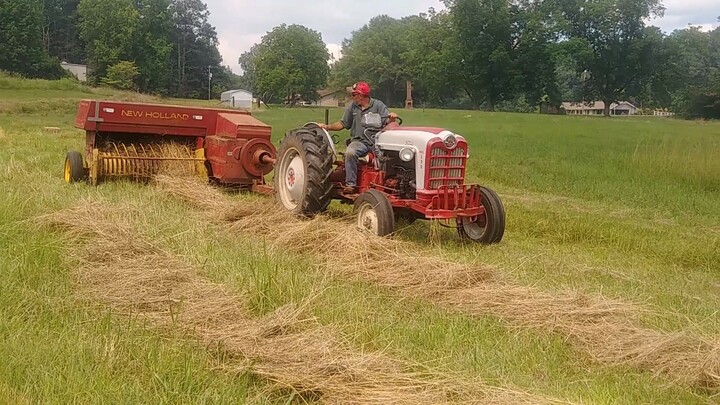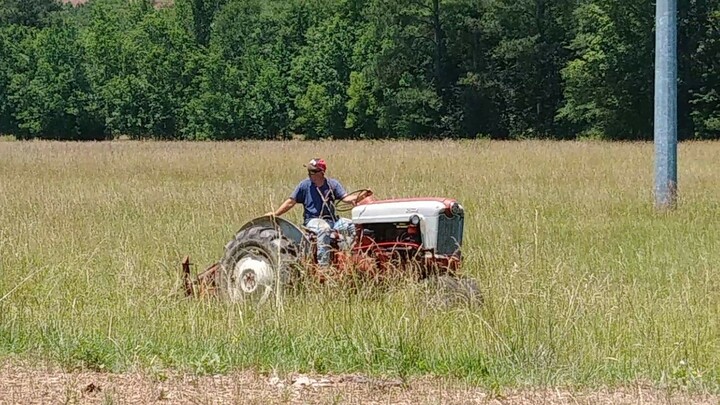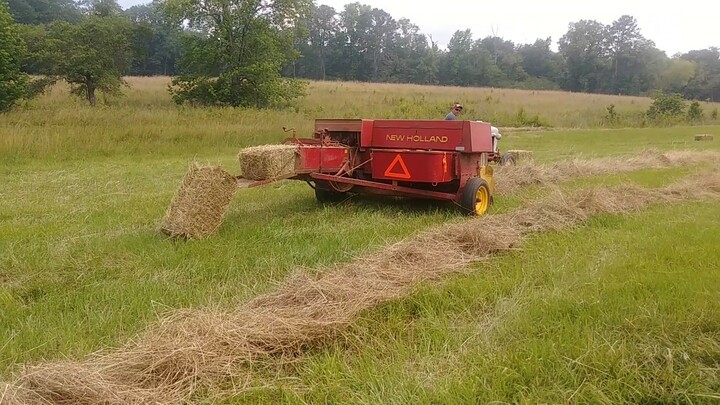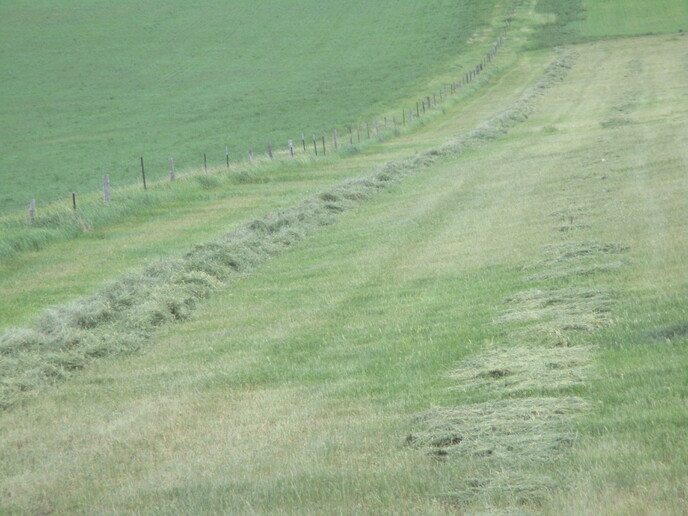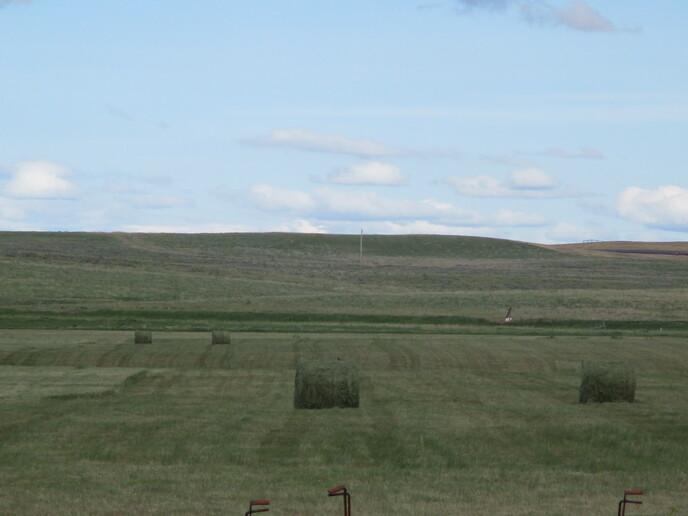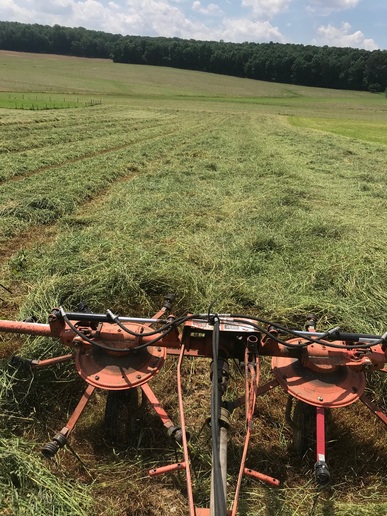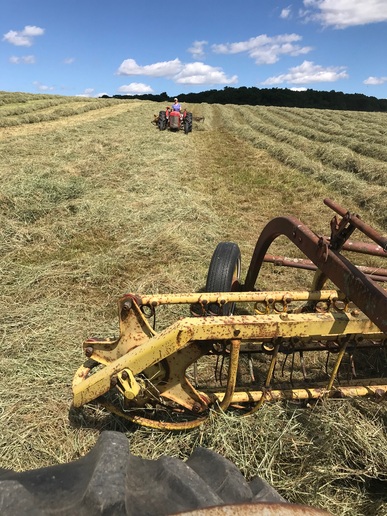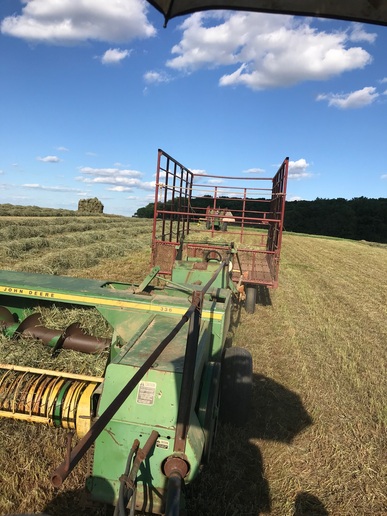The younger the crop is, the less time it's in the sun drying, will get you a greener crop of hay when baled. There is a point from an earlier nice green crop to the time when it's starts to become overripe, a window whereas you'll either have some very nice and green hay, (weather dictates) less volume to when the heads are pollenating, green top to bottom, higher volume, to overripe with some tanning, but highest volume. Lot of variables to consider.
Right now, some areas here are over ripe, tanning out, while other areas in more shaded parts or with more moisture retention, perfect, not overripe. I just cut the field near the house, using a rotary cutter, which I just did some major work to keep it running, nice new blades, in what was some pretty nice orchard and similar grasses, with some weeds. Most of it would be very nice hay, but not as green if it was baled a couple weeks back, or even just 1 week back.
You'll tan/bleach out the top or more of it the longer it sits in the sun, raked and turned over more etc.
There is a section that is shaded and in a bowl shaped area that is almost 6 fee tall and still lush green, stalkier as it is mature.
I prefer an earlier, more leafy, green cutting than later, easier to dry, not as much volume, but if a livestock operation depended on it, than would have to be later, but ideally, well before getting ripe or just before, to maintain feed value.
The weather up here has been very ideal for drying for several weeks, we have not seen such conditions in years actually. Lots of very good hay getting put up this season. Hot but low humidity for the most part, less time drying, less bleaching, and the cuttings even if mature, are not like the same time last year, which was a thick wet growth up to 6 feet, that would have taken a lot longer to dry.
